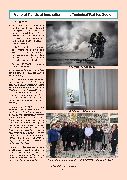General Trends of Innovation in the Technical Textiles Sector tilayer approaches •focus on high thermal performance (applying eco-efficient heating and cooling systems, together with low thermal conductivity and diffusivi- ty coatings and additives, infrared reflective and phase change mate- rials), in order to achieve Net Zero Energy Buildings (NZEB) •textile functionalization with smart and efficient systems like adding sensors, communication systems and actuators, considering printing electronics approaches, in order to maximize comfort, well-being •develop interoperability between connected devicesPersonal protection sector About Destex (Industrial and Cre- ative Design in Advanced Textile Manufacturing) The DESTEX partnership comprises eight institutions from five European countries: Sweden, Greece, Italy, Spain and Denmark. This is a mixture of in- stitutions with different profiles, capci- ties and complementary competenc- es (higher education institutions, train- ing centers, SME’s companies, non- profit institutions and business asso- ciations). Advanced Textile Materials is an emerging sector focusing on the tech- nical aspects of textile materials rath- er than on their aesthetics. In order to foster innovation within this sector, higher education programs need to uptake and reinforce creativity and design aspects into textile engineer- ing programs as driver to unlock the latent innovation potential of advanced textile manufacturing industry. In this context, DESTEX project will develop innovative training tools targeted to higher education students in order to address its objectives: (Courtesy: DESTEX project (Industri- al and Creative Design in Advanced Textile Manufacturing) - a project sup- ported by the European Commission and co-funded by the Erasmus+ pro- gramme of the European Union.)Building and living sector Group photo of representatives of all DESTEX participant institutions NCM-OCTOBER 2021 53
